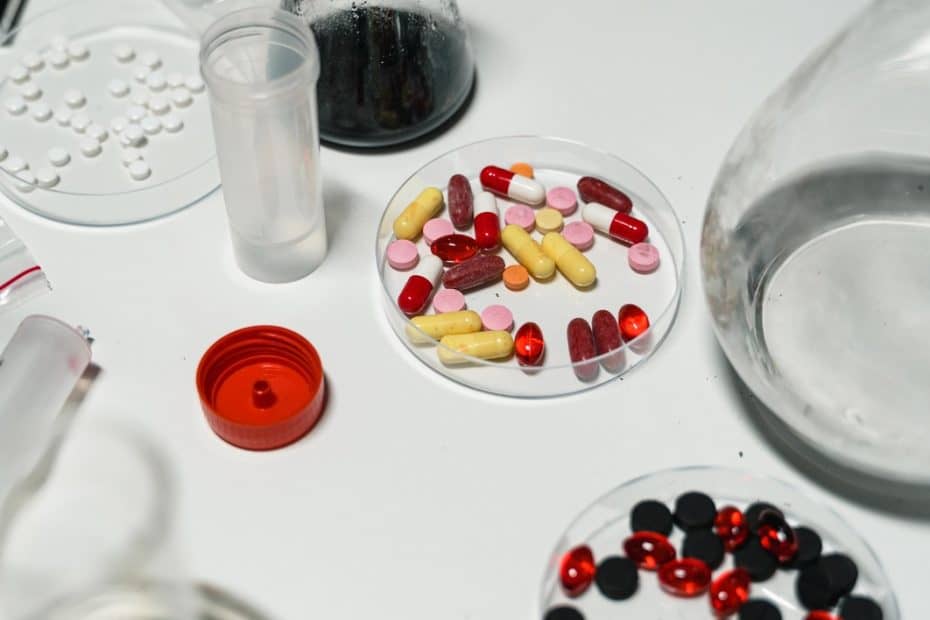If you are suffering with Ice addition, The Bardo can help you with your battle.
ICE is a potent and highly addictive drug. ICE is the crystalline form of methamphetamine that is commonly smoked, snorted, or injected. It is popular among drug users due to its ability to produce intense euphoria, increased energy, and heightened alertness. However, ICE abuse can cause severe physical and psychological harm, leading to addiction and even death.
Ice addiction has become a serious problem in Australia in recent years. According to the National Drug Strategy Household Survey (Australian Institute of Health and Welfare, 2021), approximately 1.3% of Australians aged 14 and above have used methamphetamine in the past year, and nearly half of them have used the drug in the form of ice.
The effects of ice addiction can be devastating for individuals, their families, and society as a whole. Ice use can lead to severe physical and mental health problems, including psychosis, paranoia, and violent behaviour. It can also cause financial problems, as individuals struggle to maintain a job or income while supporting their addiction.
The good news is there is hope for the ICE addict. Residential treatment programs for ICE addiction can be highly effective and should be at the centre of any recovery journey. These programs provide a structured and supportive environment, where individuals can focus solely on their recovery without the distractions and triggers of everyday life (Substance Abuse and Mental Health Services Administration, 2018).
Studies have shown that residential treatment can lead to higher rates of long-term abstinence and improved physical and mental health outcomes compared to outpatient treatment or no treatment (Mattick et al., 2014; Shearer et al., 2019). However, successfully dealing with ICE addiction depends on factors such as the quality of the program, the level of individual motivation, and the support received after leaving the program.
Sometimes the individual knows they need to deal with their ICE habit but is unsure if they are able to. They may have external pressures such as money, relationships, or potential loss of income but don’t know how to stop. This is where a residential stay with support from addiction specialists can help.
The Bardo offers a comprehensive assessment and treatment pathway to help people overcome their addictions. If you or a loved one is struggling, then call us to arrange a free assessment and treatment recommendations.
Read on for a more comprehensive overview of ICE Addiction
What is ICE (Methamphetamine)?
In its simplest terms, Methamphetamine is a synthetic stimulant drug that is chemically similar to amphetamines. ICE is the crystalline form of methamphetamine that is commonly smoked, snorted, or injected. It produces a powerful rush of pleasure and increased energy, making it highly addictive. ICE is also known as crystal, crystal meth, glass, shard, or shabu in different parts of the world. ICE is usually manufactured in illegal laboratories and can be made from easily accessible ingredients like pseudoephedrine or ephedrine.
The Physical and Psychological Impacts of ICE
ICE use can have severe physical and psychological impacts on the user. The drug increases the level of dopamine in the brain, a neurotransmitter that regulates pleasure and motivation, essentially hijacking the pleasure/reward pathways. However, the increase in dopamine can cause long-term changes in brain structure and operation, leading to addiction and other chronic adverse effects.
The immediate physical effects of ICE use include dilated pupils, increased heart rate, elevated blood pressure, and elevated body temperature. Long-term use can cause dental problems (meth mouth), severe weight loss, skin sores, premature aging, and severe damage to the brain and other organs. ICE use can also lead to an increased risk of contracting infectious diseases like HIV and Hepatitis B and C, especially if the drug is injected.
The psychological effects of ICE use can include extreme euphoria, agitation, paranoia, anxiety, and insomnia. Long-term use can cause psychosis, hallucinations, and delusions. The drug also leads to decreased impulse control, poor decision-making, and increased risk-taking behaviour.
Research has shown that ICE addiction can lead to long-term physiological changes in the brain. Studies have found that chronic methamphetamine use leads to significant changes in brain function, including reduced grey matter volume, impaired memory and cognitive function, and alterations in dopamine receptors. These changes can persist even after the individual has stopped using the drug, leading to a higher risk of relapse that’s why ongoing support for the short, medium, and long term is an integral part of the recovery journey where ICE is concerned.
The Addictive Nature of ICE
ICE is highly addictive due to its potent effects on the brain’s reward system. The drug increases the level of dopamine in the brain, which produces intense feelings of pleasure and euphoria. The user experiences a rush of pleasure and energy, which reinforces the desire to continue using the drug. This cycle of pleasure and reinforcement can lead to addiction, making it challenging for users to quit using the drug.
Research has shown that the addictive potential of ICE is higher than other stimulant drugs, including cocaine. A study conducted by the National Institute on Drug Abuse (NIDA) found that methamphetamine use leads to higher levels of dopamine release than cocaine, which can contribute to the drug’s addictive properties.
The Impact of ICE on the Individual, the Family, and Society
ICE addiction can have a significant impact on the individual, their family, and society as a whole. The individual may experience health problems, financial difficulties, and legal issues due to ICE addiction. They may become isolated from family and friends, neglect their responsibilities, and struggle to maintain healthy relationships.
The family of an ICE addict may experience emotional distress, financial difficulties, and social stigma due to the addiction. Children of ICE addicts may experience neglect or abuse, leading to long-term psychological and emotional harm. ICE addiction can also have a significant impact on society, as it can lead to crime, violence, and a burden on healthcare systems.
A study conducted in Australia by the National Drug and Alcohol Research Centre found that the societal costs of methamphetamine use in Australia are estimated to be around $5 billion per year. The study also found that the use of ICE has increased in recent years, with more people seeking treatment for methamphetamine addiction.
Signs you or someone you know is an ICE Addict
It can be challenging to recognize if someone is addicted to ICE, as the signs of addiction can be subtle. However, some signs may indicate ICE addiction, including:
Increased irritability, anxiety, or aggression
Insomnia or changes in sleep patterns
Weight loss and lack of appetite
Dilated pupils and increased heart rate
Paranoia, hallucinations, and delusions
Impaired judgment and decision-making
Neglect of responsibilities and relationships
Secretive behavior and lying
Financial difficulties or unexplained money problems
Legal problems, such as arrests or convictions related to drug use or possession.
If you or someone you know is exhibiting these signs, it is essential to seek help and support to overcome ICE addiction.
Treatment for ICE Addiction
ICE addiction is treatable, and several effective treatment options are available. Treatment for ICE addiction may involve behavioral therapies, medications, or a combination of both.
Behavioral Therapies
Behavioral therapies are an essential component of ICE addiction treatment. These therapies help individuals identify the underlying causes of their addiction, develop coping skills, and learn strategies to avoid relapse. Some common behavioral therapies used to treat ICE addiction include:
Cognitive-behavioral therapy (CBT): This therapy helps individuals identify and change negative thoughts and behaviors that contribute to addiction.
Motivational interviewing (MI): This therapy helps individuals increase their motivation to change their addictive behaviors.
Contingency management (CM): This therapy involves providing incentives for individuals to remain drug-free.
Family therapy: This therapy involves family members in the addiction treatment process to improve communication and support for the individual.
Medications
Medications may be used to treat ICE addiction to reduce withdrawal symptoms and cravings. A significant part of treatment for ICE addiction is withdrawal symptom management such as dealing with sleep issues, appetite realignment, emotional management, and dealing with cravings. However there are some medications that may be prescribed according to recommendations from an addiction specialist and these can be explored as part of your medical assessment.
Conclusion
In short, ICE addiction is a severe problem that can have significant impacts on the individual, their family, and society as a whole. The addictive nature of ICE makes it challenging to overcome without proper treatment and support. Understanding the physical and psychological impacts of ICE use, recognising the signs of ICE addiction, and seeking treatment can help individuals overcome addiction and improve their quality of life. Several effective treatment options are available, including residential support to kick start recovery, behavioral and counselling therapies, and the potential use of medications.
You can get help today by calling The Bardo and undertaking a free assessment with treatment recommendations.
References:
Australian Institute of Health and Welfare. (2019). National Drug Strategy Household Survey 2019. Canberra: AIHW.
Lee, N. K., Rawson, R. A., & Ait-Daoud, N. (2008). A review of the role of craving in the methamphetamine relapse process. Journal of psychoactive drugs, 40(sup5), 397-407.
National Institute on Drug Abuse. (2019). Methamphetamine DrugFacts. Retrieved from https://www.drugabuse.gov/publications/drugfacts/methamphetamine
Rawson, R. A., Shoptaw, S. J., Obert, J. L., McCann, M. J., Hasson, A. L., Marinelli-Casey, P. J., … & Ling, W. (1995). An intensive outpatient approach for cocaine abuse treatment: The Matrix model. Journal of substance abuse treatment, 12(2), 117-127.
Substance Abuse and Mental Health Services Administration. (2019). Treatment for Stimulant Use Disorders: Clinical Guidelines for Prescribing. Rockville, MD: Substance Abuse and Mental Health Services Administration.
United Nations Office on Drugs and Crime. (2019). World Drug Report 2019. Vienna: UNODC.
National Drug and Alcohol Research Centre. (2019). Methamphetamine use in Australia: What are the costs? Sydney: NDARC.
National Institute on Drug Abuse. (2020). Effective Treatments for Methamphetamine Addiction. Retrieved from https://www.drugabuse.gov/publications/research-reports/methamphetamine/what-are-effective-treatments-methamphetamine-addiction



